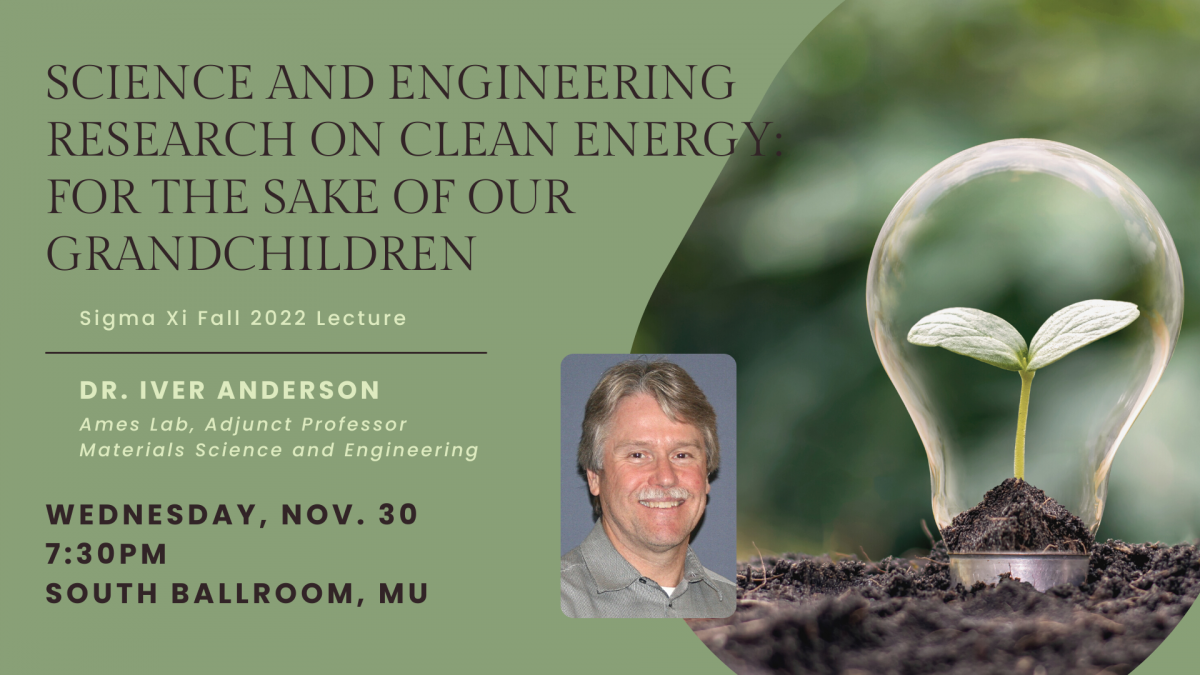Science and Engineering Research on Clean Energy: For the Sake of Our Grandchildren
- Sigma Xi
- Committee on Lectures (funded by Student Government)

Sigma Xi Fall 2022 Lecture
To attack and, hopefully, to reverse greenhouse gas (GHG) growth, the critical but formidable goal of net zero GHG emissions by 2050 must be reached. This will require major efforts from across our society, especially a “leap of faith” by all the world’s economies. From the latest IPCC report, it is becoming increasingly apparent that we must do this for the health and well-being of our own children and grandchildren, if we want to help them avoid predictable climate disasters. Therefore, we professionals in the science and engineering community must make our best efforts to work on important GHG emission challenges to make the economic leap to green technologies more pragmatic and palatable. Recent analysis shows that there are huge market opportunities that can arrive with clean energy transitions, particularly if several key science, engineering, and overall technology barriers are overcome. With solutions to these critical problems resulting from research that is supported by enlightened government programs and industry leaders, a new global energy economy can emerge quite naturally. This new sustainable economy has the potential to create millions of excellent jobs across a host of new supply chains, along with many more generations of smiling grandchildren!
Iver Anderson earned his BS in Metallurgical Engineering in 1975 from Michigan Tech. Anderson went on to earn his MS and PhD in Metallurgical Engineering from University of Wisconsin-Madison. After completing his studies in 1982, he joined the Metallurgy Branch of the US Naval Research Laboratory in Washington, DC.
His career path has led him to a position as senior metallurgist at Ames Laboratory (USDOE) and adjunct professor in the Materials Science and Engineering department at Iowa State University. He is a fellow of the American Powder Metallurgy Institute, ASM International, TMS, and the National Academy of Inventors, as well as a member of the National Inventors Hall of Fame.
Anderson is highly regarded for his research accomplishments in the area of powder metallurgy and rapid solidification, and its implementation into new and innovative magnetic materials, structural components, lightweight, and porous materials. Another research focus has been in metallurgical joining in electronic assembly, in brazing, and in welding, as well as in ceramic joining. These contributions and innovations have led to over 265 publications and 45 patents.
This event was recorded and will be available for two weeks on the Lectures website at https://www.lectures.iastate.edu/recordings/available-recordings